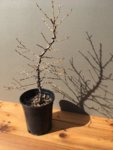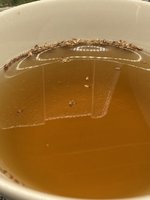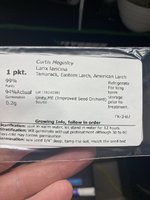sdavis
Mame
Western larch, Larix occidentalis - because they live locally are your best choice. They are only occasionally used for bonsai, see the Oregon artist's blogs, or contact them for any quirks of western larch. Either Mike Hagedorn, or Jonas Dupuich, or Ryan Neil, Matt Reel, Dan Robinson, one of them has experience with western larch. I don't recall any negatives. Should be winter hardy without temperature protection. Maybe shelter from wind, etc but temperature should not be an issue.
Larix lyallii - sub-alpine larch - high elevations of western North America - high elevation up to the tree line, northward well into the arctic tundra tundra. Adapted to very short growing season, and very cold temperatures. Very likely totally intolerant of warm summers. Heat would limit its use at lower latitudes or elevations. Similar heat tolerance issues with Siberian species Larix gmelinii and Larix sibirica. Though there might be some L. gmelinii being used as bonsai, but I believe only where summers are mild, and winters cold.
European Larch - Larix decidua - is known for the trunk becoming much larger in diameter relative to height than Japanese or native eastern American larch - Larix laricina. Will grow in slightly dryer, less wet locations than Larix laricina (tamarack) but European larch would still want consistent moisture. Will tolerate a little more heat than Larix decidua. I would not attempt to grow warmer than zone 7a.
Larix laricina - Eastern American Larch - Tamarack - Native to North America east of Rocky mountains, range in extreme northern Canada is extends west of Rockies. Native into zone 3. Extremely cold tolerant. Native range does not extends only into zone 6 in the south of its range. Needs a consistent and long cold winter dormancy, which likely limits its southern range. Not a good larch for Florida. Native to bogs in its southern range, can live in very wet pure peat soils, or can live in very inorganic, mineral soils in the more northern extent of its range. It wants consistent moisture available all year round. Acid to neutral soils are okay. Despite its origin in bogs, it does not seem sensitive at all to soil pH. So don't worry about it. Any mix suitable to conifers would work if not allowed to get dry.
Larix kaempferi - from mountains of central Japan, cold and heat tolerance similar to European larch, tends to be slender and graceful at bonsai size trees. So good for zones 6, 5 and 4 growers in North America. Maybe into zone 7a.
All larches work best in vertical styles, cascades are near impossible to keep healthy. Semi-cascades have been done with European larch, but it is hard to get a larch to grow in directions below horizontal. They want to grow either up or out.
Repotting MUST happen before green is visible sticking out of buds in spring. - The emphasis is mine, due to my problems with repotting, if you have been successful repotting after buds have begun to open that is fine, most people have trouble if repotted after spring growth as expanded beyond the bud stage.
That is most of what I know.
Having actually grown most of the above species in my yard in central Oregon I can say that, for me, the Larix larcinia is by far the most cold hardy and tolerates 100 degrees just fine. I like the bark of L. lyalli the best but that species is nearly impossible to find. Depending on the winter and spring conditions I find L. kaempferi, L. decidua, and L. occidentalis (which is native here) less dependable.



